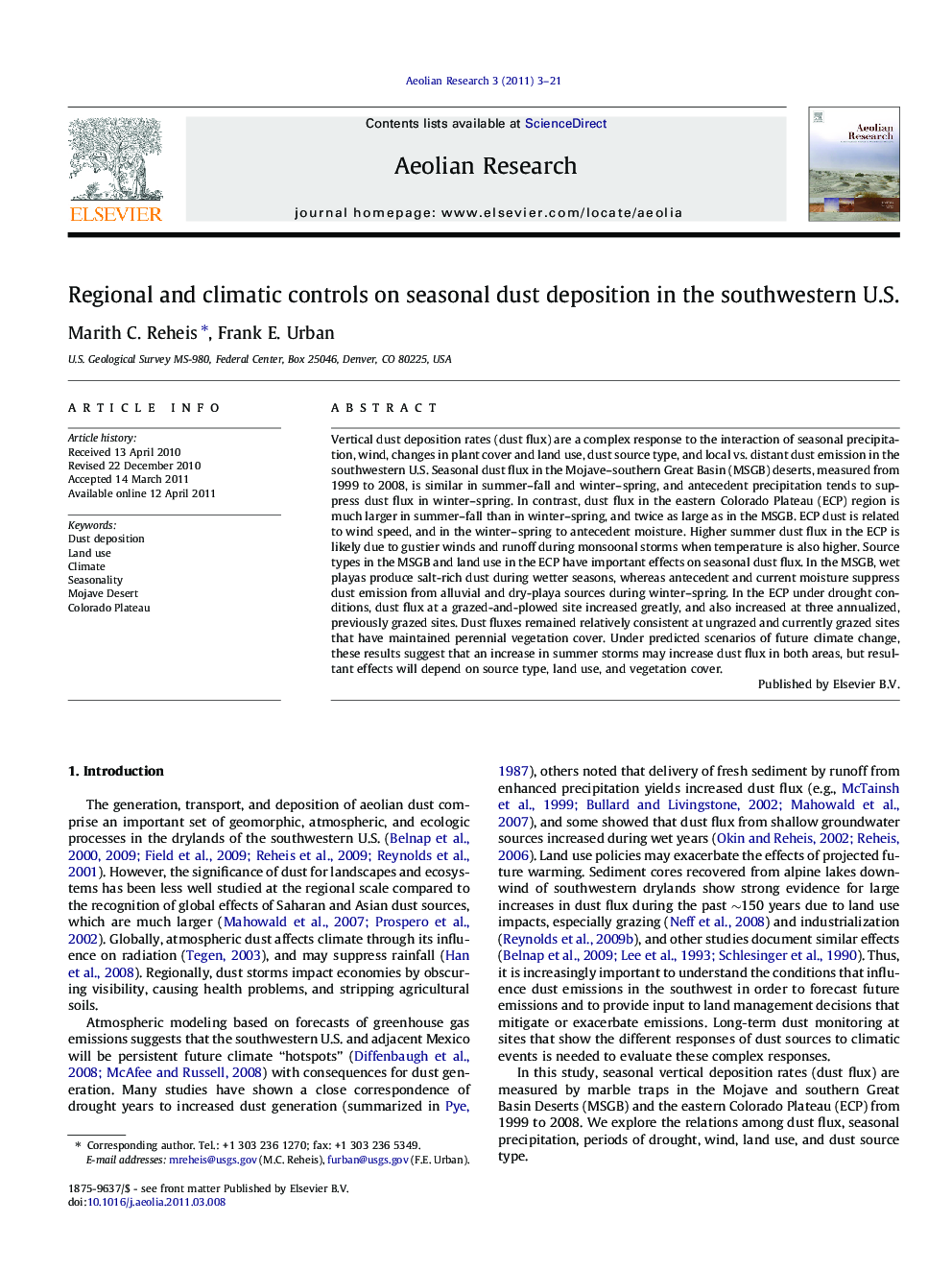| کد مقاله | کد نشریه | سال انتشار | مقاله انگلیسی | نسخه تمام متن |
|---|---|---|---|---|
| 4673878 | 1346967 | 2011 | 19 صفحه PDF | دانلود رایگان |

Vertical dust deposition rates (dust flux) are a complex response to the interaction of seasonal precipitation, wind, changes in plant cover and land use, dust source type, and local vs. distant dust emission in the southwestern U.S. Seasonal dust flux in the Mojave–southern Great Basin (MSGB) deserts, measured from 1999 to 2008, is similar in summer–fall and winter–spring, and antecedent precipitation tends to suppress dust flux in winter–spring. In contrast, dust flux in the eastern Colorado Plateau (ECP) region is much larger in summer–fall than in winter–spring, and twice as large as in the MSGB. ECP dust is related to wind speed, and in the winter–spring to antecedent moisture. Higher summer dust flux in the ECP is likely due to gustier winds and runoff during monsoonal storms when temperature is also higher. Source types in the MSGB and land use in the ECP have important effects on seasonal dust flux. In the MSGB, wet playas produce salt-rich dust during wetter seasons, whereas antecedent and current moisture suppress dust emission from alluvial and dry-playa sources during winter–spring. In the ECP under drought conditions, dust flux at a grazed-and-plowed site increased greatly, and also increased at three annualized, previously grazed sites. Dust fluxes remained relatively consistent at ungrazed and currently grazed sites that have maintained perennial vegetation cover. Under predicted scenarios of future climate change, these results suggest that an increase in summer storms may increase dust flux in both areas, but resultant effects will depend on source type, land use, and vegetation cover.
► We measured vertical dust deposition from 1999 to 2008 in the southwestern U.S.
► Rates in the Mojave Desert area are similar in summer–fall and winter–spring.
► Summer–fall rates in the eastern Colorado Plateau are twice as large.
► Higher summer dust flux is due to gustier winds and runoff during monsoonal storms.
► Grazing and drought together increase dust flux at Colorado Plateau sites.
Journal: Aeolian Research - Volume 3, Issue 1, June 2011, Pages 3–21